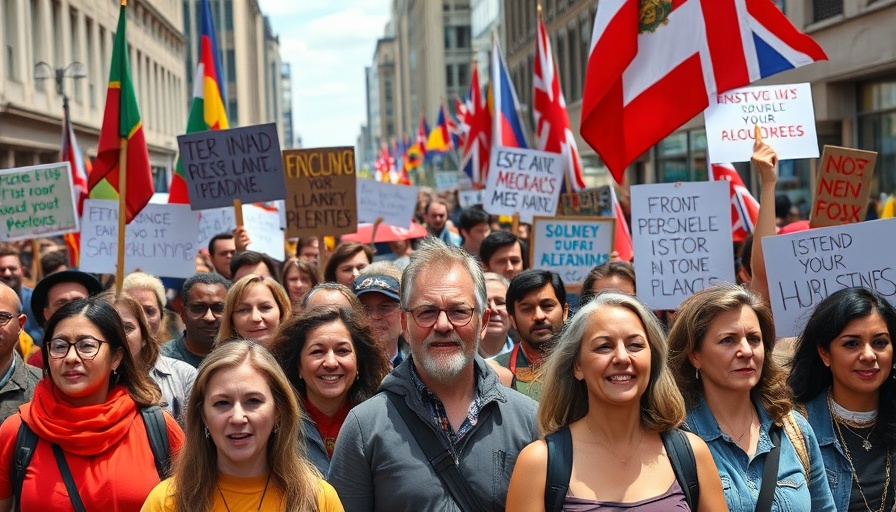
The Standoff: Ceasefire Conditions and Hostage Negotiations
Amidst the backdrop of an ongoing humanitarian crisis, Hamas has announced that it will only release an American-Israeli hostage, Edan Alexander, along with the remains of four other hostages, if Israel adheres to its stated ceasefire agreement. This decision reflects a strategic shift by Hamas as it seeks negotiation leverage in a conflict that has so far led to significant casualties and devastation.
The Reality of Hostage Situations and Community Reactions
The complexity of hostage negotiations is underscored by the emotional outcry from families of hostages in Israel. Frontline protests occurred in Tel Aviv where relatives expressed dissatisfaction with Prime Minister Benjamin Netanyahu's government, claiming it was not doing enough to aid in the hostages' release. The palpable anxiety faced by these families represents the deep emotional toll of the ongoing conflict, where each negotiation twist impacts lives directly.
Ground Conditions: The Humanitarian Impact of the Conflict
As hostilities continue, Israeli airstrikes in Gaza recently resulted in the deaths of nine individuals, including journalists and medical personnel. The escalating violence raises concerns about the provision of humanitarian aid, which has been severely restricted. Reports show that many areas within Gaza are now relying entirely on international aid, as essential services and infrastructure crumbled under the weight of conflict.
The Broader Implications of Hamas’s Ceasefire Proposition
This so-called “exceptional deal” presented by Hamas poses significant implications for the structure of ongoing peace talks. Both regional and international observers are closely watching as the United States pushes for discussions to resume, aiming for a comprehensive ceasefire that seeks to include all involved parties. Israel’s military strategy has been described as a means to prevent arms smuggling but has drawn criticism for its humanitarian repercussions. The challenge lies in reconciling military objectives with the dire humanitarian conditions reported by NGOs and health officials.
International Mediation Efforts Amidst Stalemates
Negotiation efforts continue under the watchful eyes of U.S. and Egyptian mediators. Preliminary discussions regarding the second phase of ceasefire talks have stagnated, indicating the precarious nature of peace negotiations in the region. By emphasizing terms of the ceasefire as a prerequisite for releasing hostages, Hamas not only highlights its bargaining power but also its willingness to entrench itself in prolonged negotiations.
A Future Uncertain: The Fine Line Between Peace and Warfare
The cyclical nature of violence between Israel and Hamas raises profound questions about the future of peace in the region. As humanitarian needs rise and violence threatens to escalate further, the stakes for all involved are high. Family members of hostages like Edan Alexander illustrate the urgent need for a resolution, but the political realities on both sides complicate the path to peace.
The ramifications of this hostage situation extend beyond the immediate cultural and emotional fabric of society; they underscore the tensions of international diplomacy amidst local realities. It is crucial for communities and individuals to stay informed and involved, advocating for answers and humanitarian support.
In conclusion, as the dialogue continues and the situation evolves, it is essential for the global community to recognize the profound implications of these negotiations and strive for peaceful resolutions that prioritize human life and dignity. The ongoing conflict serves as a critical reminder of the innate complexities of international relations and the human experiences intertwined within them.
 Add Row
Add Row  Add
Add 






Write A Comment